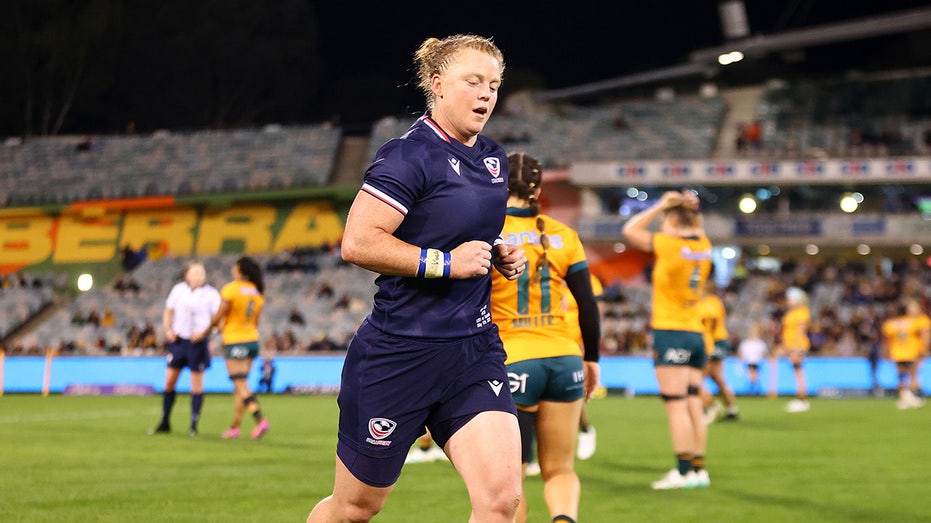Trump's 'big, beautiful bill' wins support from police for overtime tax elimination
FIRST ON FOX: Police officers are rallying behind a provision in President Donald Trump's "big, beautiful bill" to end taxing overtime work, which they say would have a favorable ripple effect on officer retention and morale.
"No tax on overtime, it would be a huge advantage to law enforcement across the country," one officer said in a White House video shared with Fox News Digital.
Another added: "We work sometimes 100 plus hours a pay period. It's a lot of time taken away from the family. So that would be pretty special."
Republican lawmakers are in the midst of hashing out the details of the sweeping legislation that would fund Trump's agenda through the budget reconciliation process. The legislation jumped its latest hurdle to move along to passage late Sunday evening, when lawmakers on the House Budget Committee voted to advance the bill.
Trump has called on Republicans to swiftly pass the legislation, touting that it will lower taxes and provide larger paychecks for Americans, while also securing the border. Trump specifically directed congressional Republicans to permanently extend his 2017 Tax Cuts and Jobs Act (TCJA), and implement new policies eliminating taxes on tips, overtime pay and retirees' Social Security.
Officers in the White House video touted that eliminating taxes on overtime would serve as an extra dose of "appreciation" to law enforcement.
Police departments nationwide saw morale and staffing crater in 2020 and the following years as left-wing cities answered calls from activists to defund the police following the death of George Floyd while in police custody on Memorial Day 2020. Many liberal cities soon walked back budget plans slashing police department funding as crime waves washed over the nation, stretching from sky-high murder rates to teenagers repeatedly carrying out carjackings.
"If there was no tax on overtime … we'd be working about as hard as we currently do, but we would have that appreciation that goes along with it," one officer in the video said.
VANCE SEARS US LEADERS TURNING POLICE INTO 'ENEMIES'
‘ENOUGH IS ENOUGH’: GOP SENATOR UNLEASHES BILL WITH SEVERE CONSEQUENCES FOR HARMING POLICE
The police officers continued that removing taxation on overtime likely would lead to senior officers sticking around in the job longer to help train the next generation of law enforcement, while also giving younger officers extra cash in their pockets to raise their young families on an officer's salary.
"To have something like this in play would just help senior officers, perhaps stay a little bit longer to help be that guidance for that department, that community, to help teach those policy and procedures that we know of and to help with the retention," one police officer said.
POLICE GROUP SLAMS GOFUNDME FOR OHIO FATHER ACCUSED OF KILLING DEPUTY LARRY HENDERSON
A female officer added: "That would really benefit those, especially younger cops that have younger kids and a lot of families. I think that would mean a tremendous amount."
May is Law Enforcement Appreciation month, with a mid-May National Police Week celebration and the White House illuminating its exterior in blue colors Thursday evening in honor of police officers who were killed or injured while in the line of duty.
"So know from the president on down, this administration stands behind you guys," Vice President JD Vance said during a law enforcement breakfast Wednesday at the vice president’s residence. "We love you guys. We know that you're out there doing a good job for us. And I think that moral leadership matters just as much as the public policy. But from this administration, you're, of course, getting it both."
Fox News Digital's Elizabeth Elkind and Diana Stancy contributed to this report.




:max_bytes(150000):strip_icc():format(jpeg)/carrie-underwood-jamal-roberts-051925-a624b1cefb624c199fc43d58275a06e8.jpg)
:max_bytes(150000):strip_icc():format(jpeg)/peo-wayfair-memorial-day-weekend-storage-deals-tout-2a1d1270eb8345c3a12929e80a06a996.jpg)
:max_bytes(150000):strip_icc():format(jpeg)/alan-jackson-retiring-051925-59ab7130543d4e69add040bc29479352.jpg)
:max_bytes(150000):strip_icc():format(jpeg)/joe-jill-biden-051925-9be239026fa042fdad4f7e41f71b79a8.jpg)
:max_bytes(150000):strip_icc():format(jpeg)/maria-jose-estupinan-051925-1-aa013a0c07294db5bcd820a9ffcaf772.jpg)







